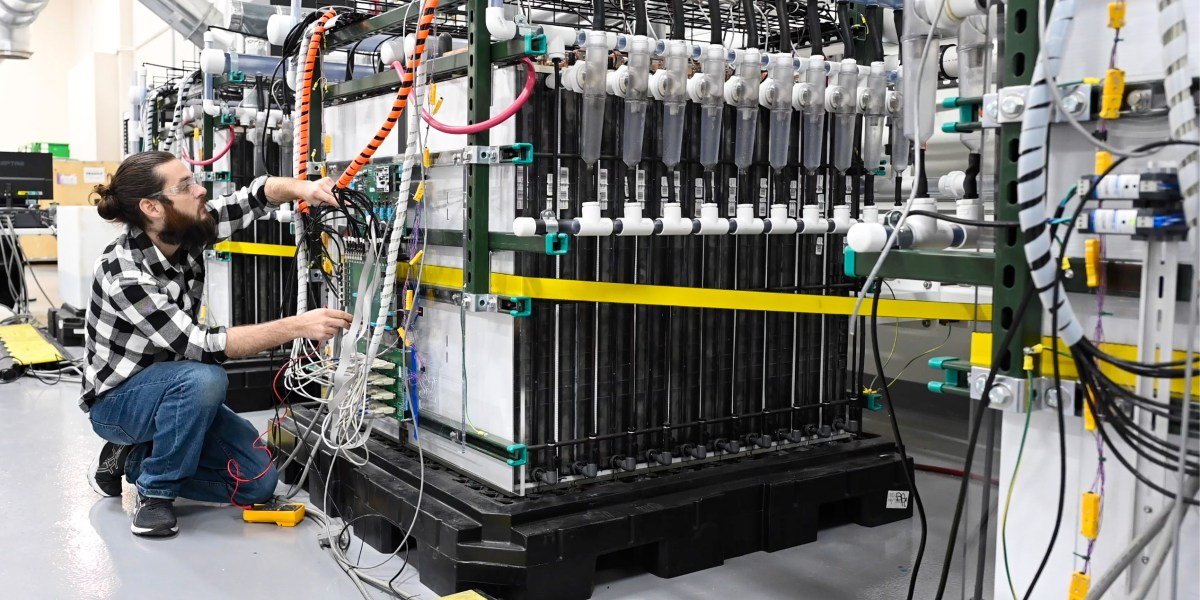Form Energy uses an iron-air chemistry in its batteries: as they store energy, the iron combines with oxygen, converting to rust. As energy discharges, the reverse reaction happens, regenerating the iron metal and oxygen.
Cost is king in energy storage, which is why Form is aiming for its alternative battery system to cost $20 per kilowatt-hour (a measure of how much energy is stored or delivered). That’s less than one-fifth the cost of lithium-ion cells today. Iron-air batteries are heavier and bulkier than lithium-ion and many other energy storage options, but they could be an ideal solution for large installations on the grid, where weight and size are less important than cost and durability.
Key indicators
- Industry: Energy storage
- Founded: 2017
- Headquarters: Somerville, Massachusetts, USA
- Notable fact: Form Energy’s batteries store energy using electrochemical reactions that basically cause metal to rust, then reverse that process.
Potential for impact
Electricity production accounts for roughly a quarter of global emissions. If Form Energy’s iron-air batteries can store renewable energy to use when there’s no sun or wind, they could help the grid transition away from fossil fuels.
About 28 gigawatts of grid batteries were operational and storing energy worldwide in 2022. But to stay on track for net-zero emissions, that number needs to grow by over 30 times, to 967 GW, by 2030, according to the International Energy Agency.
Source link

